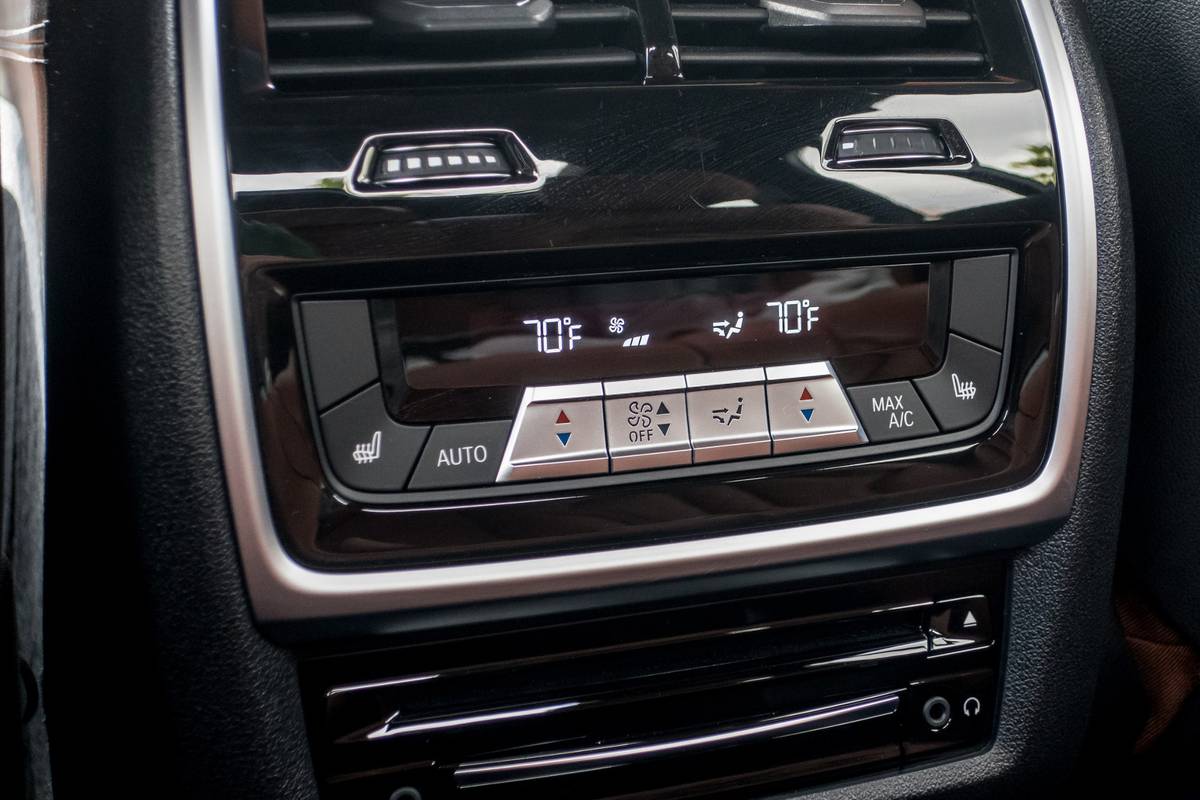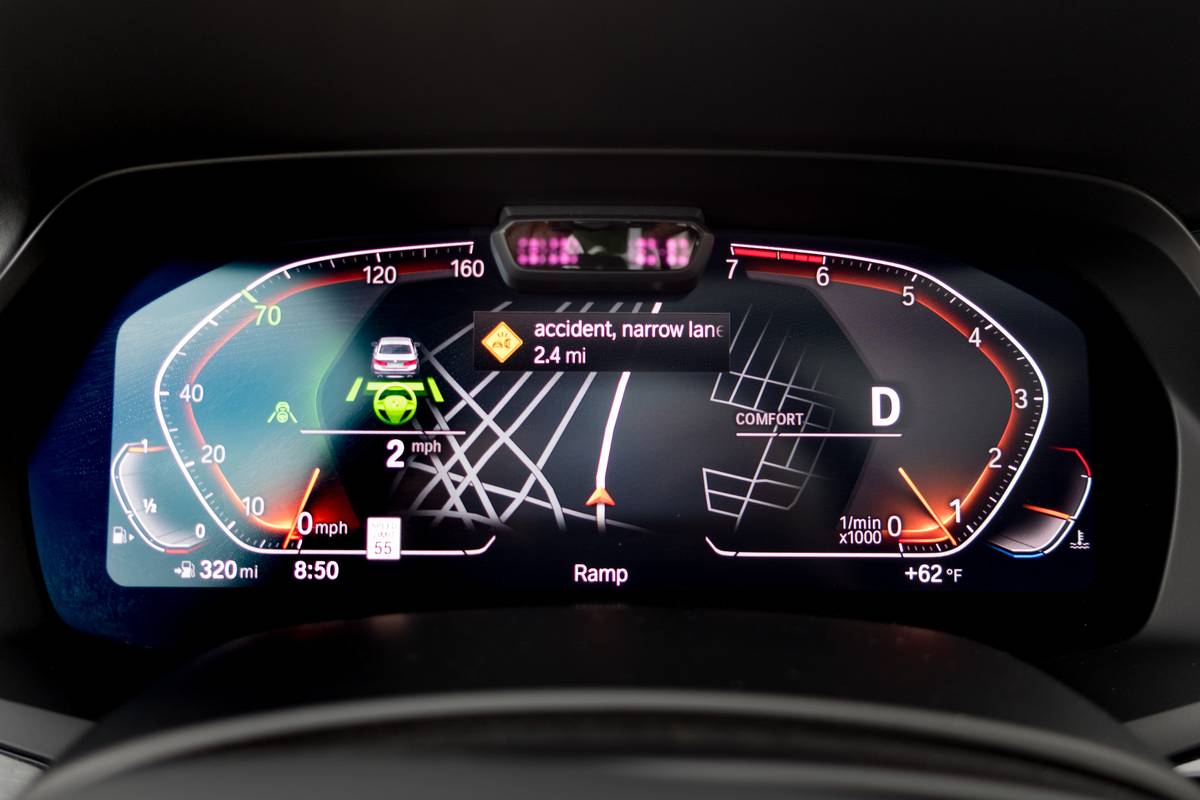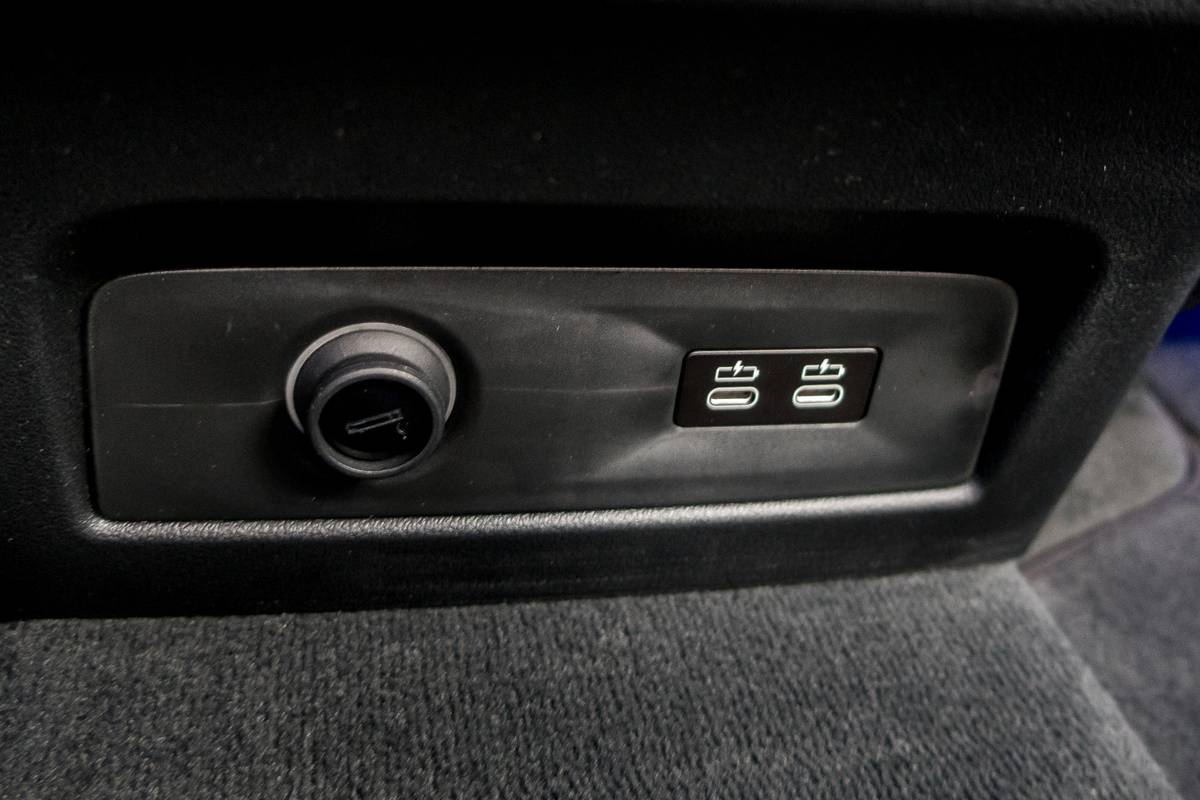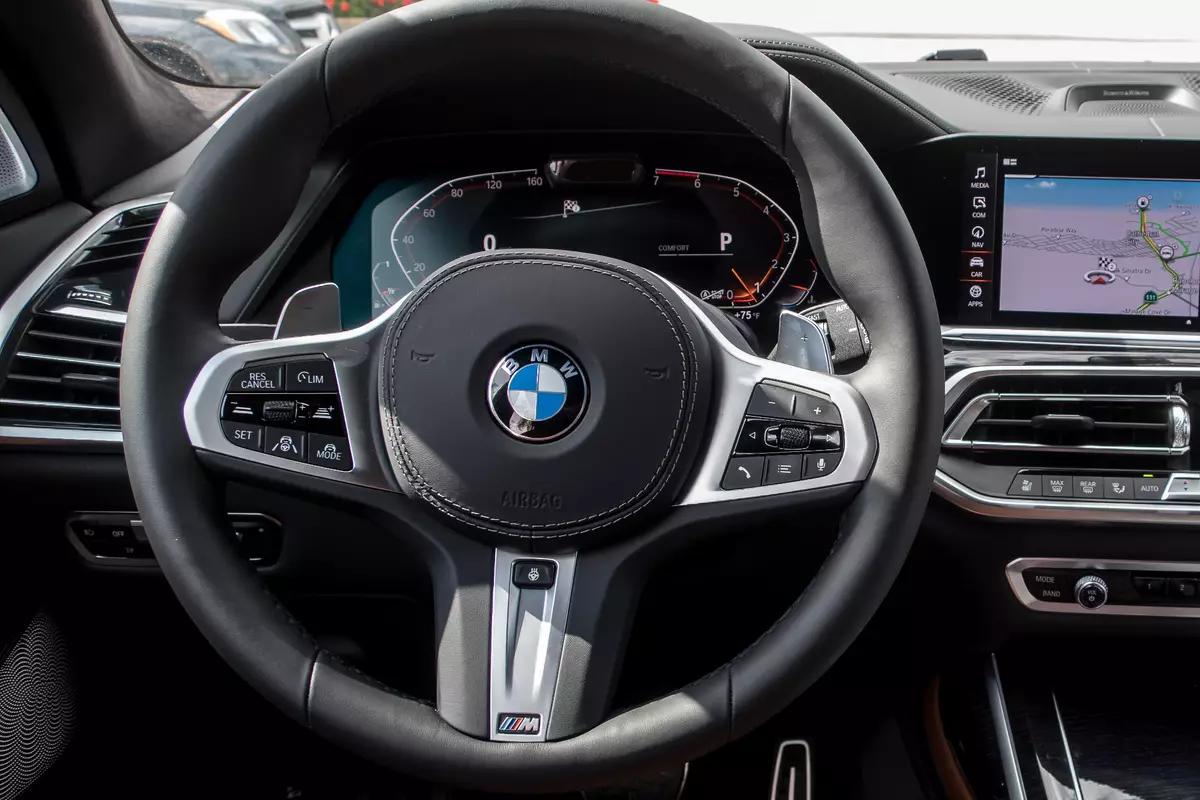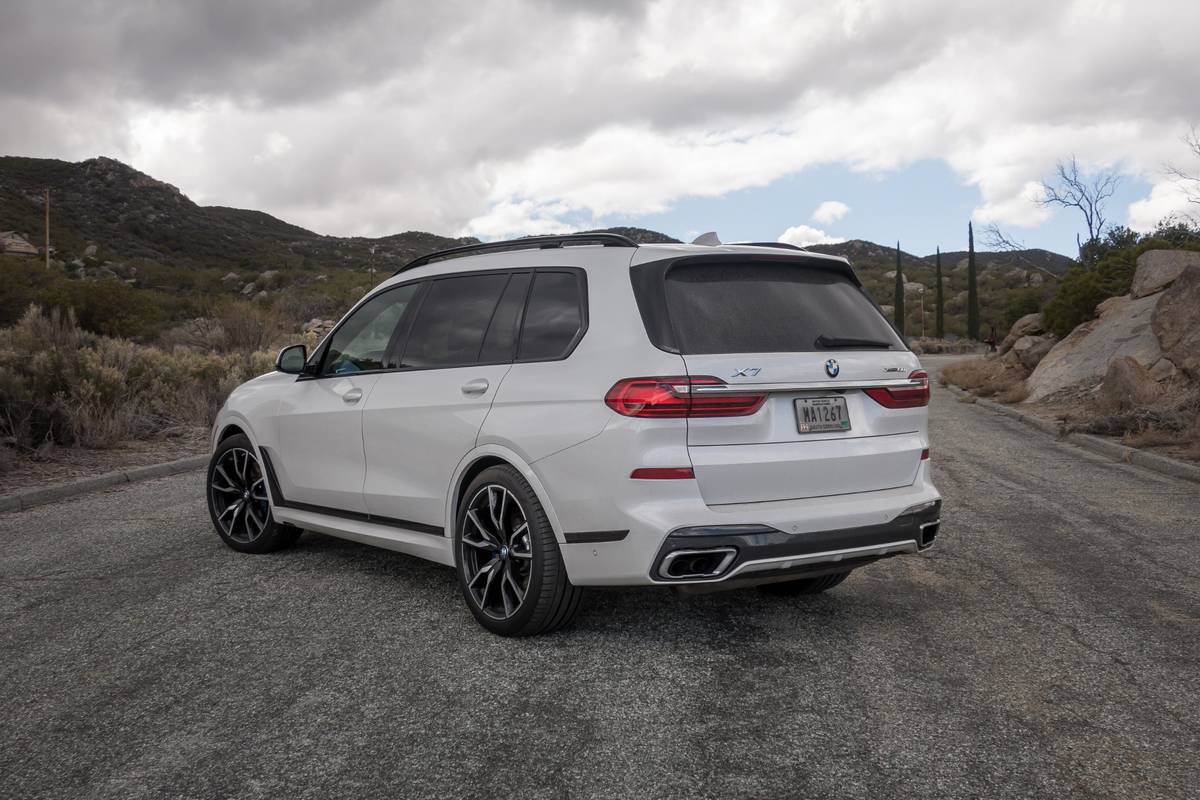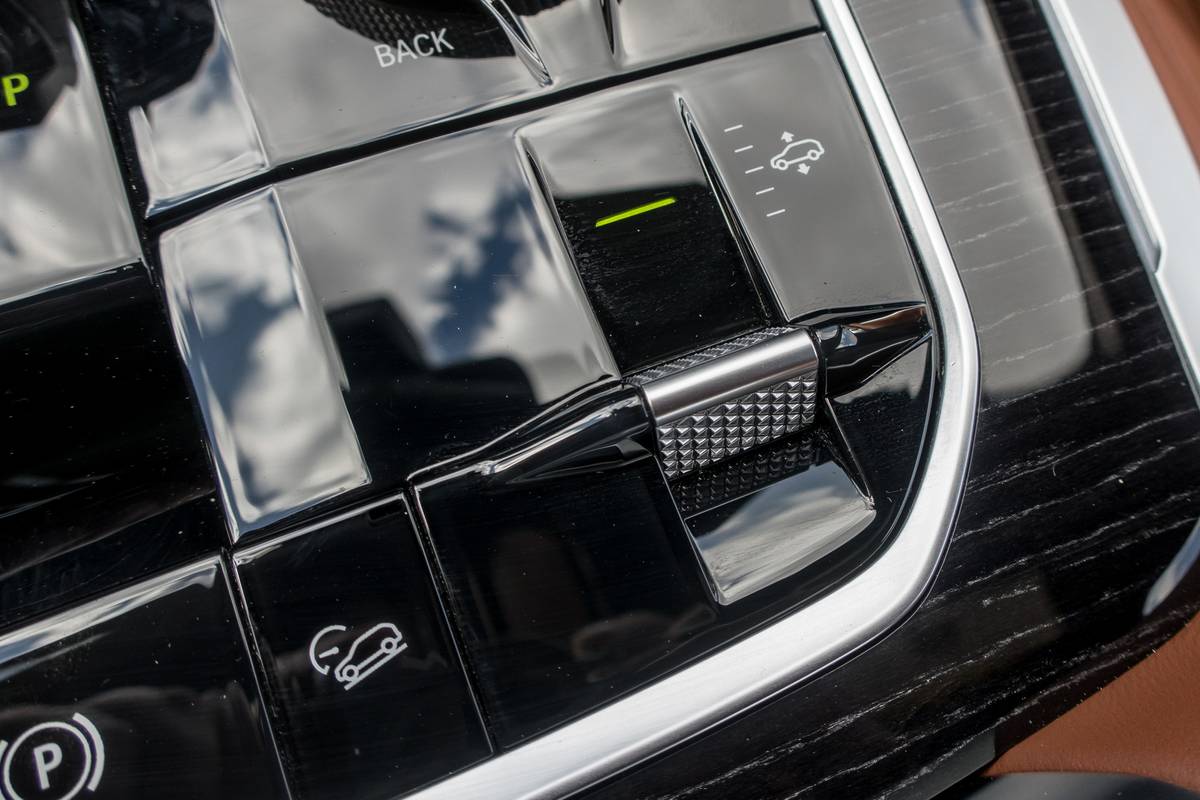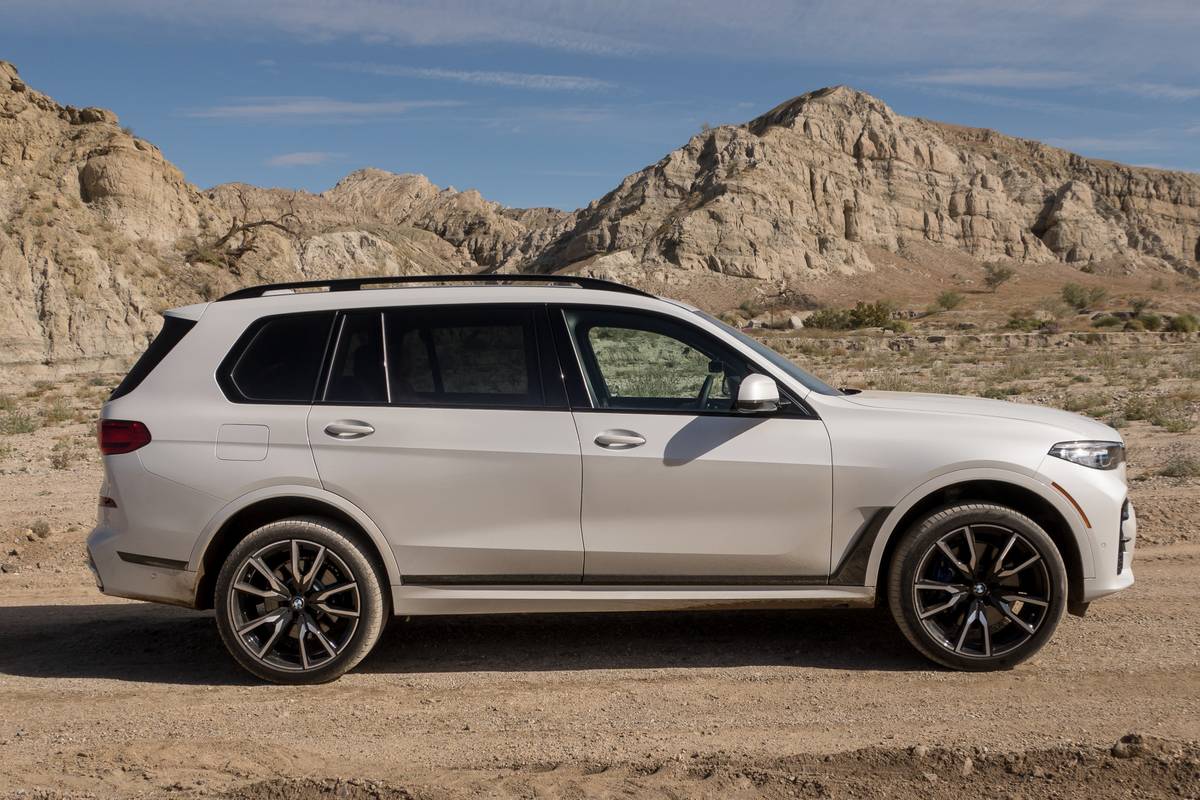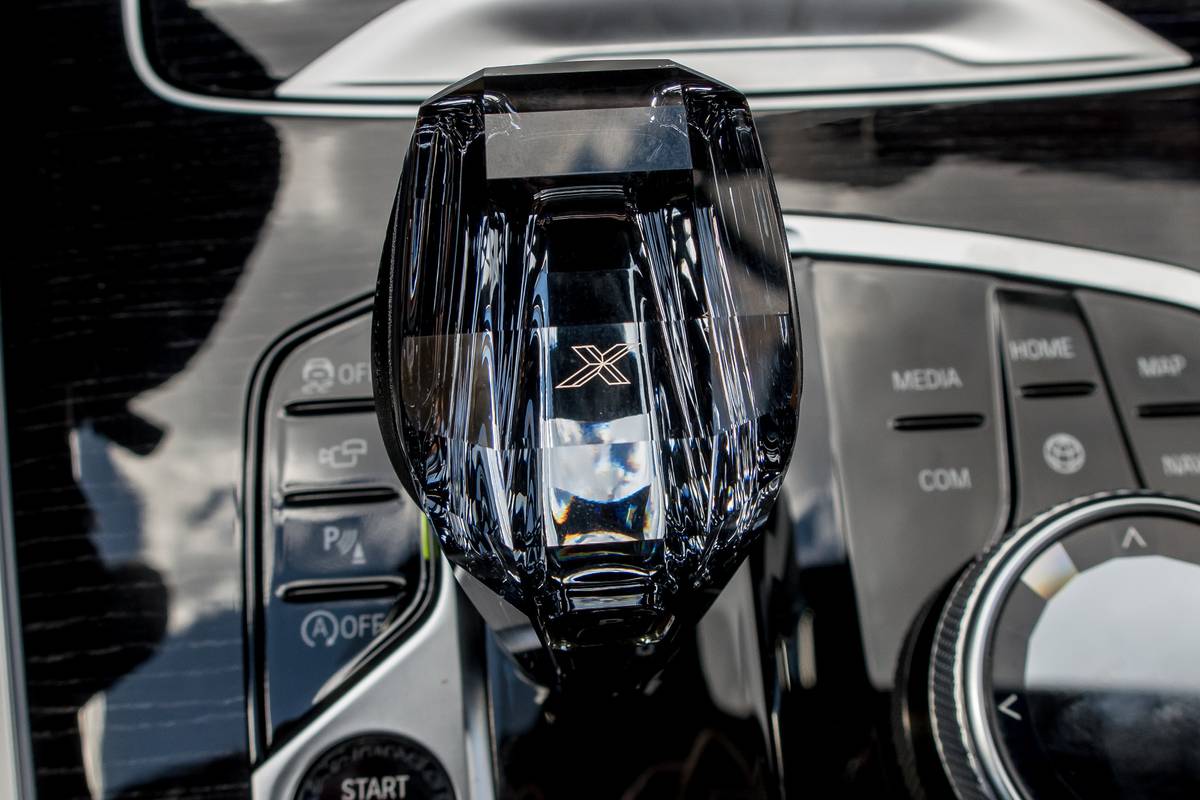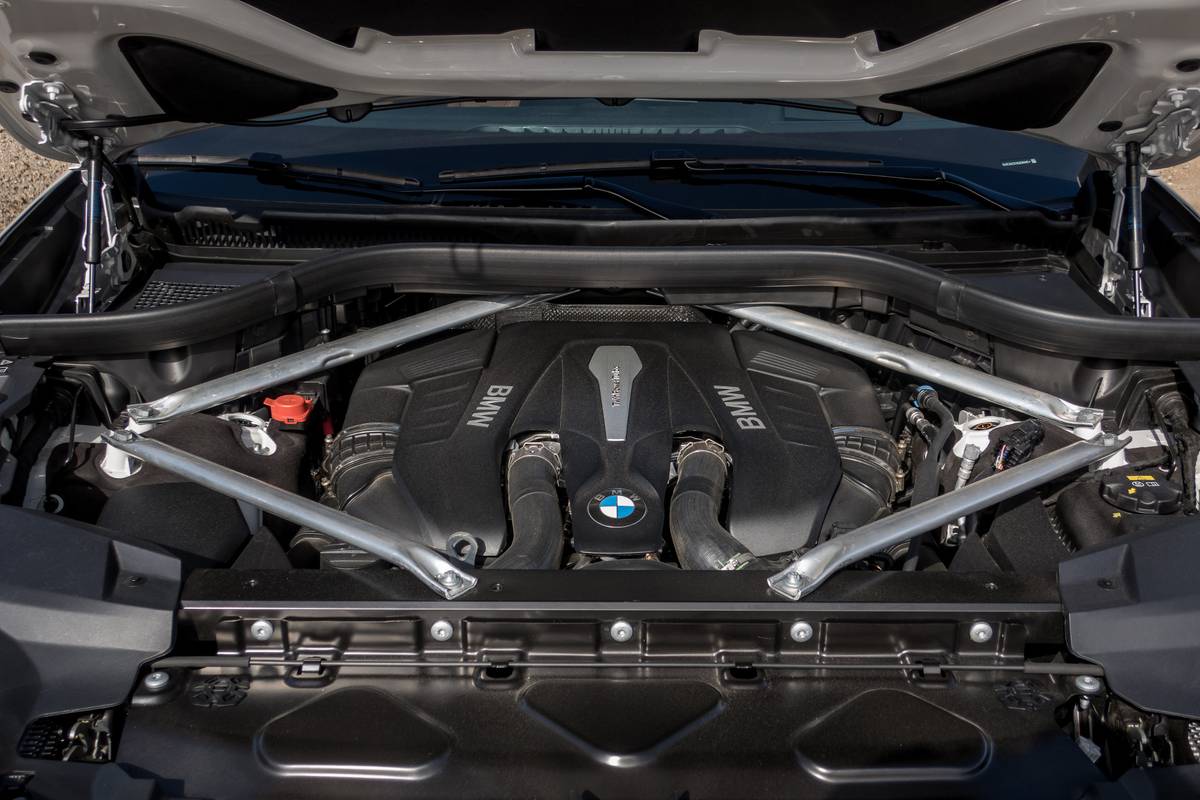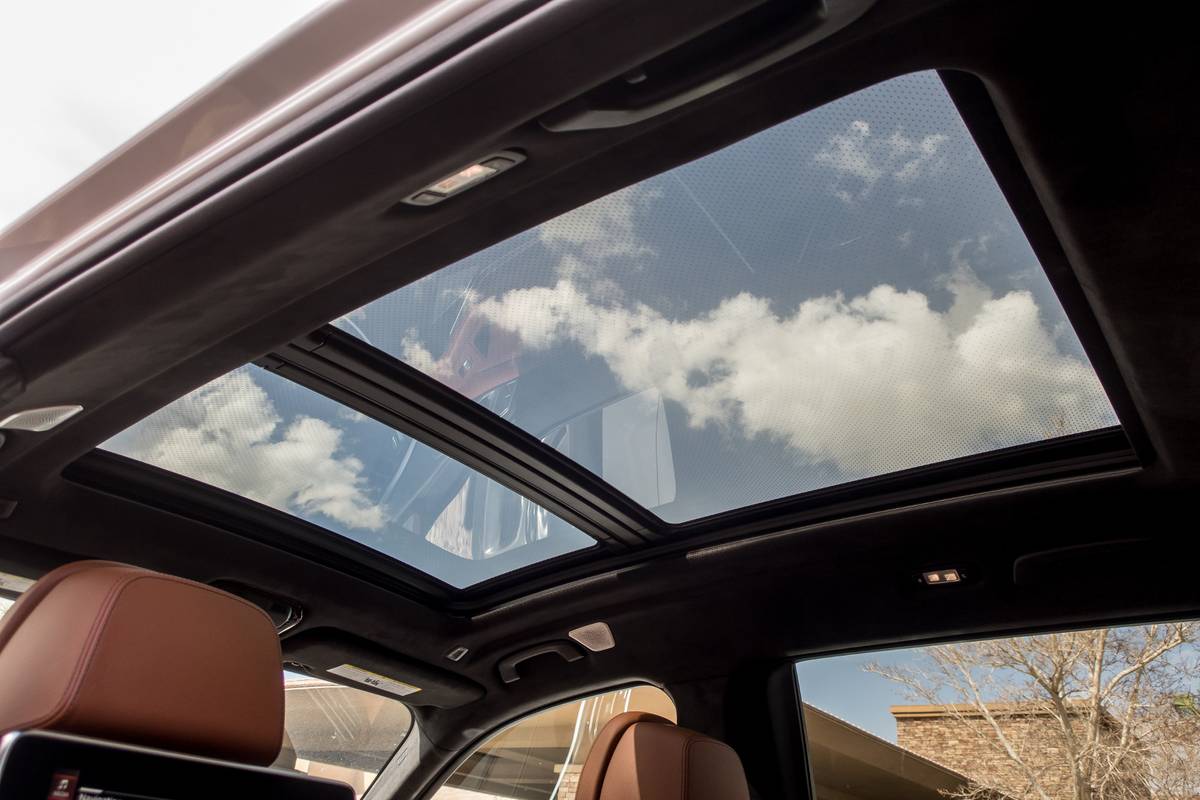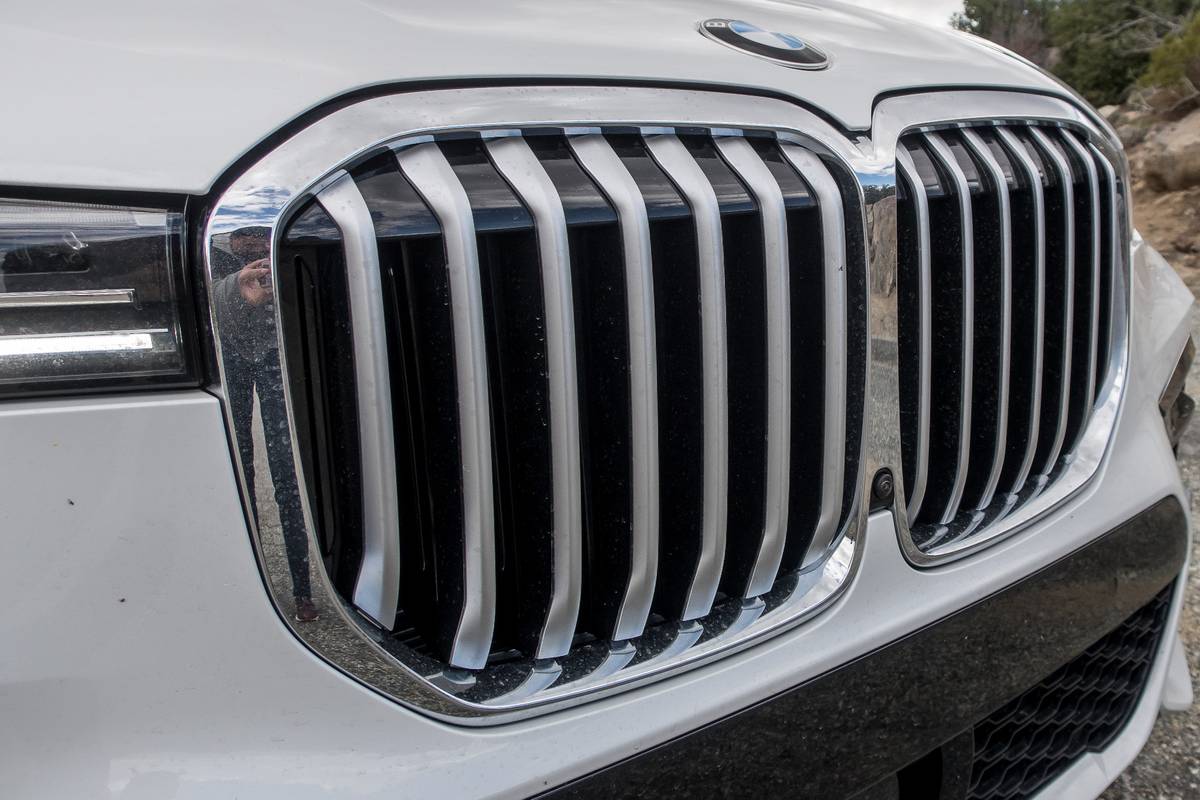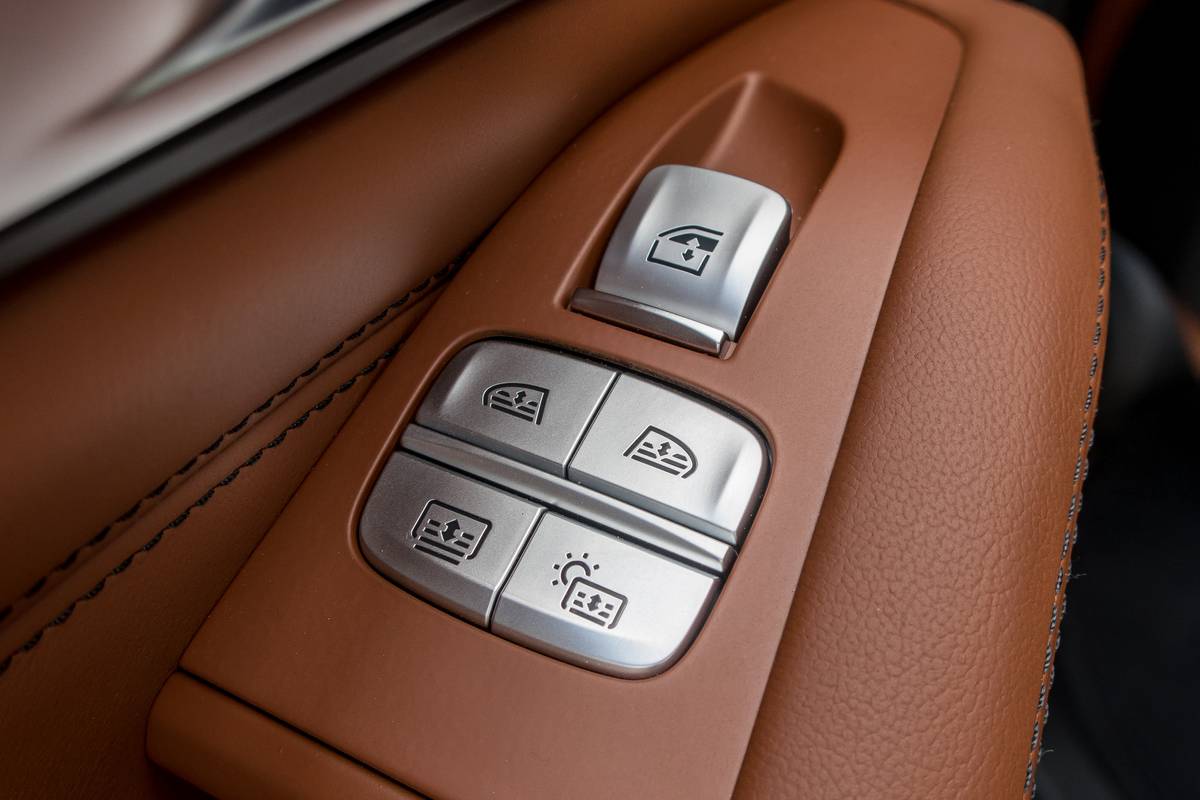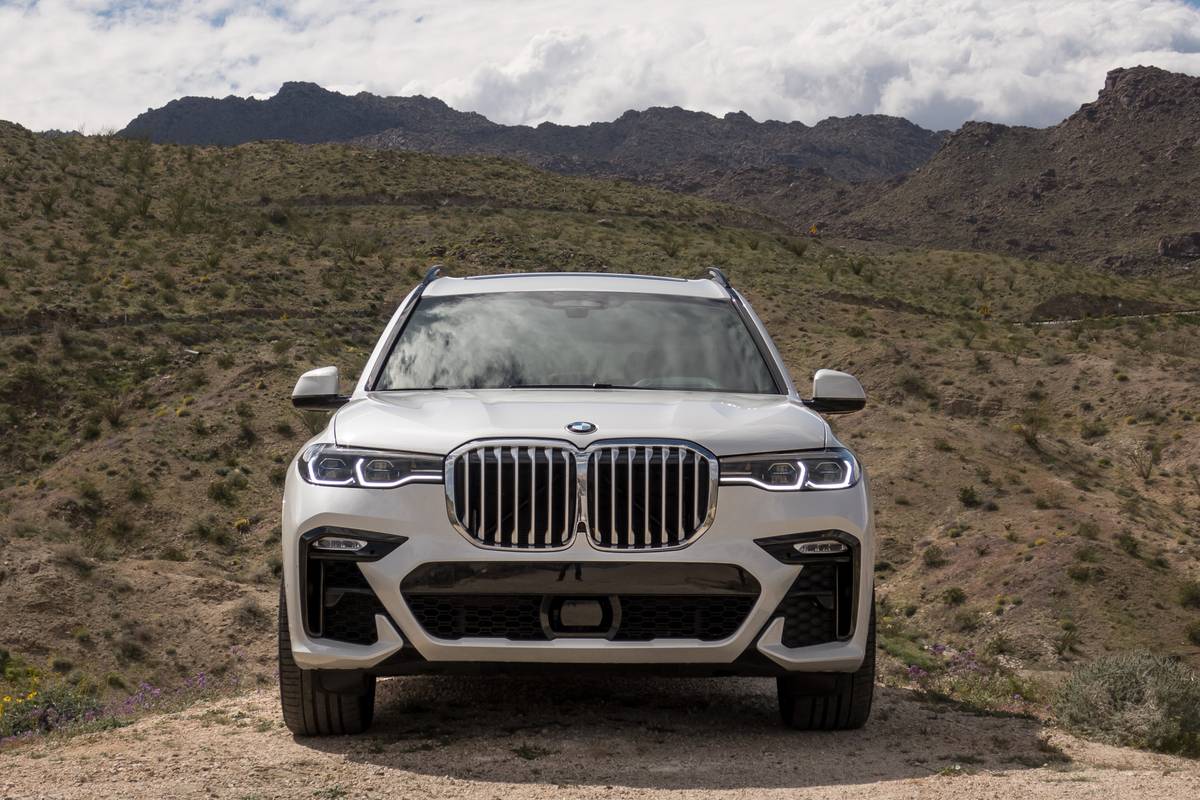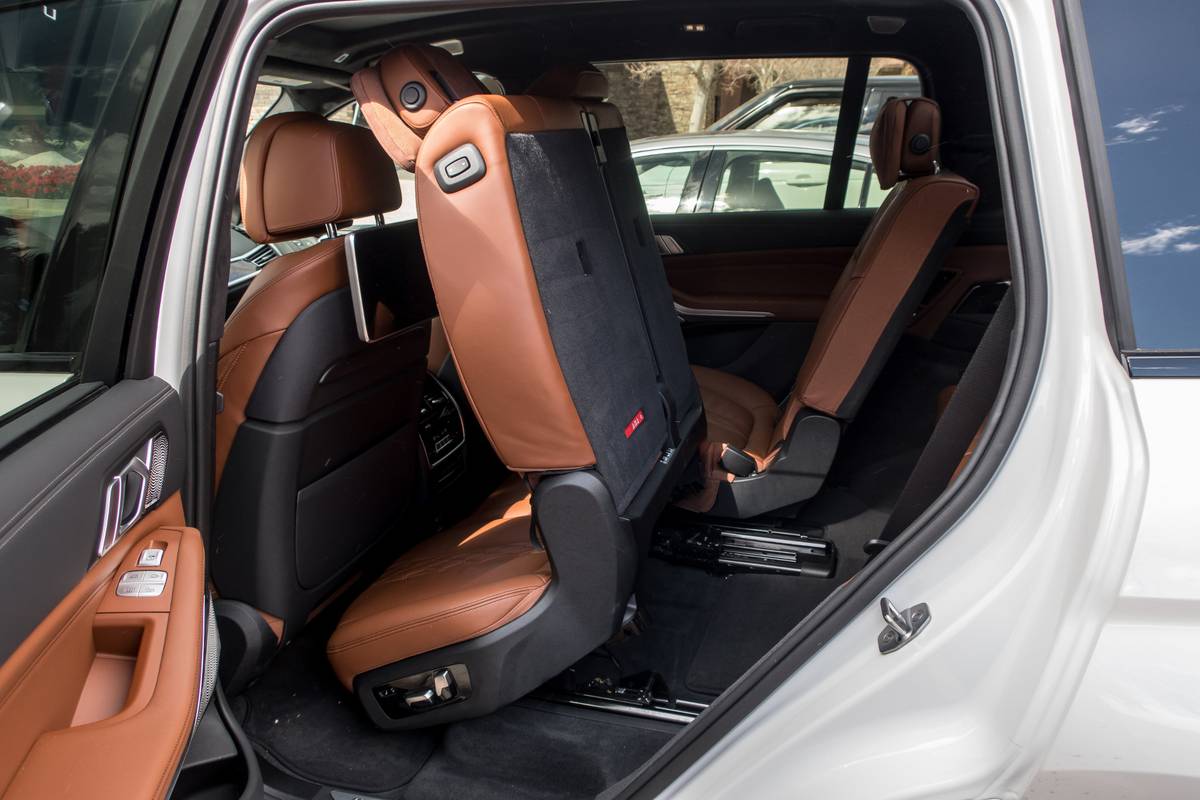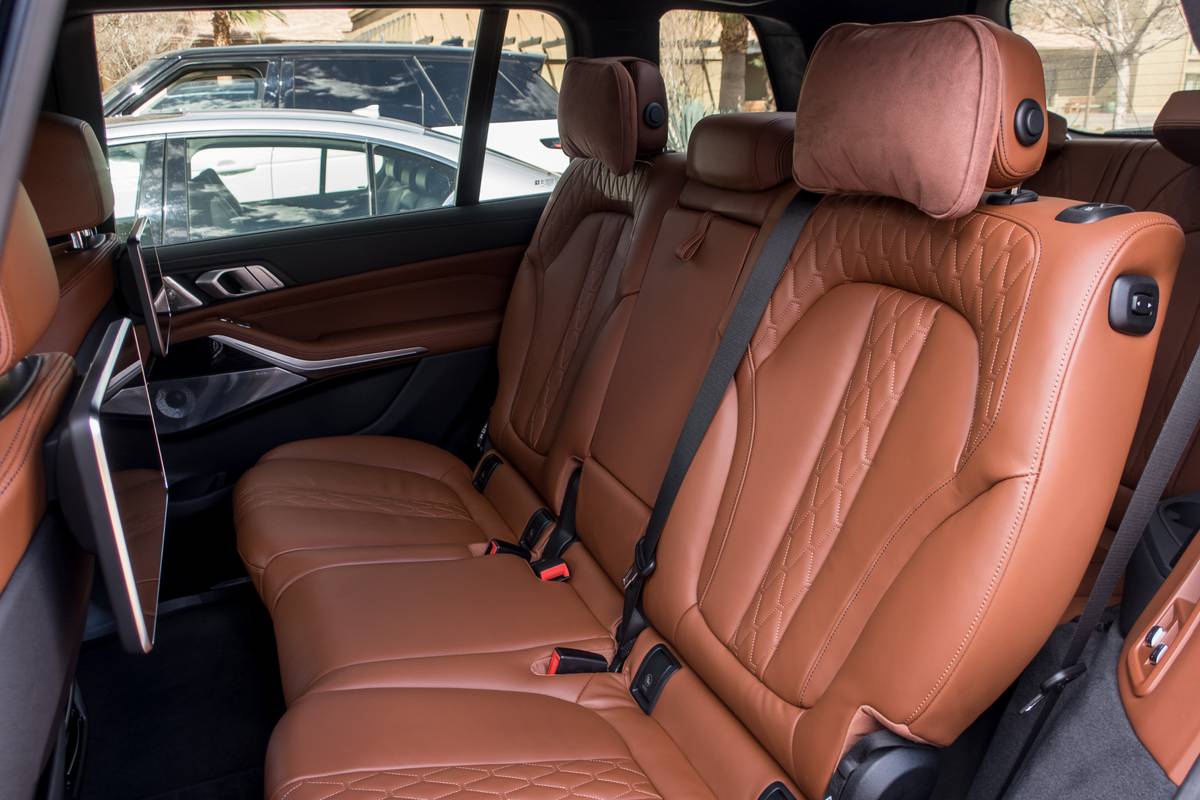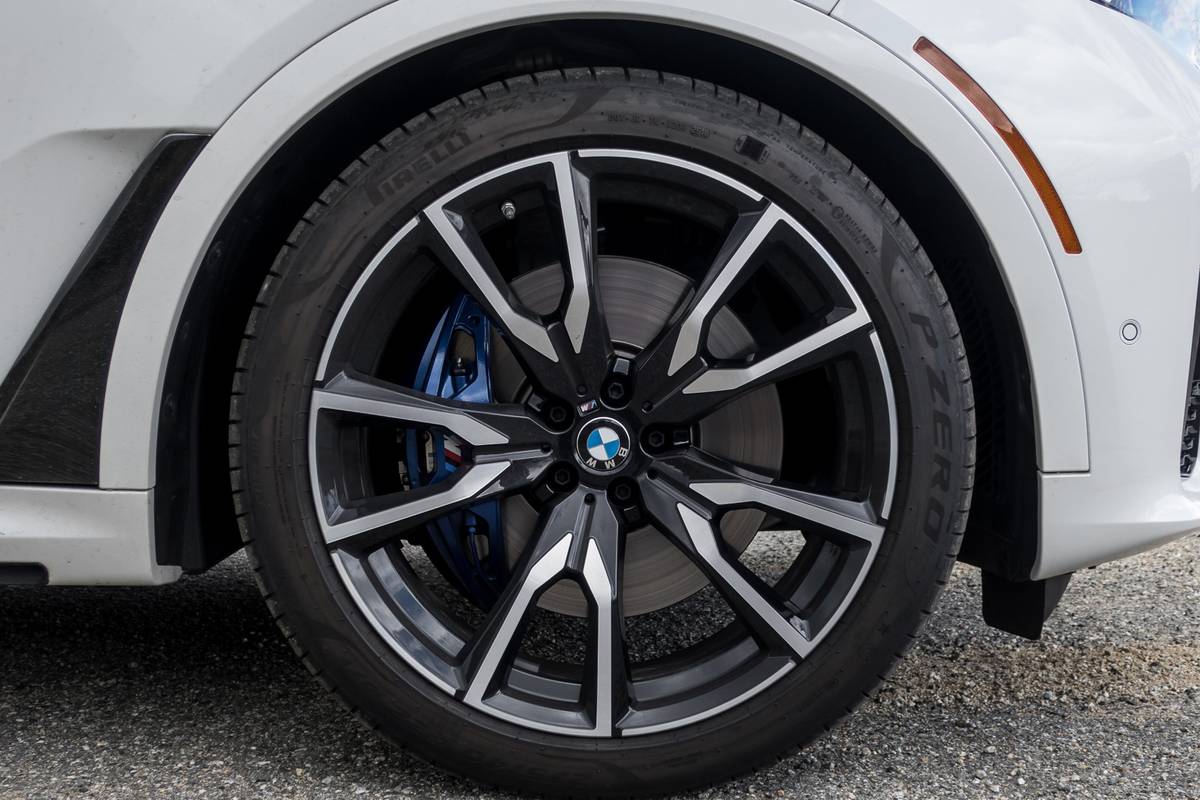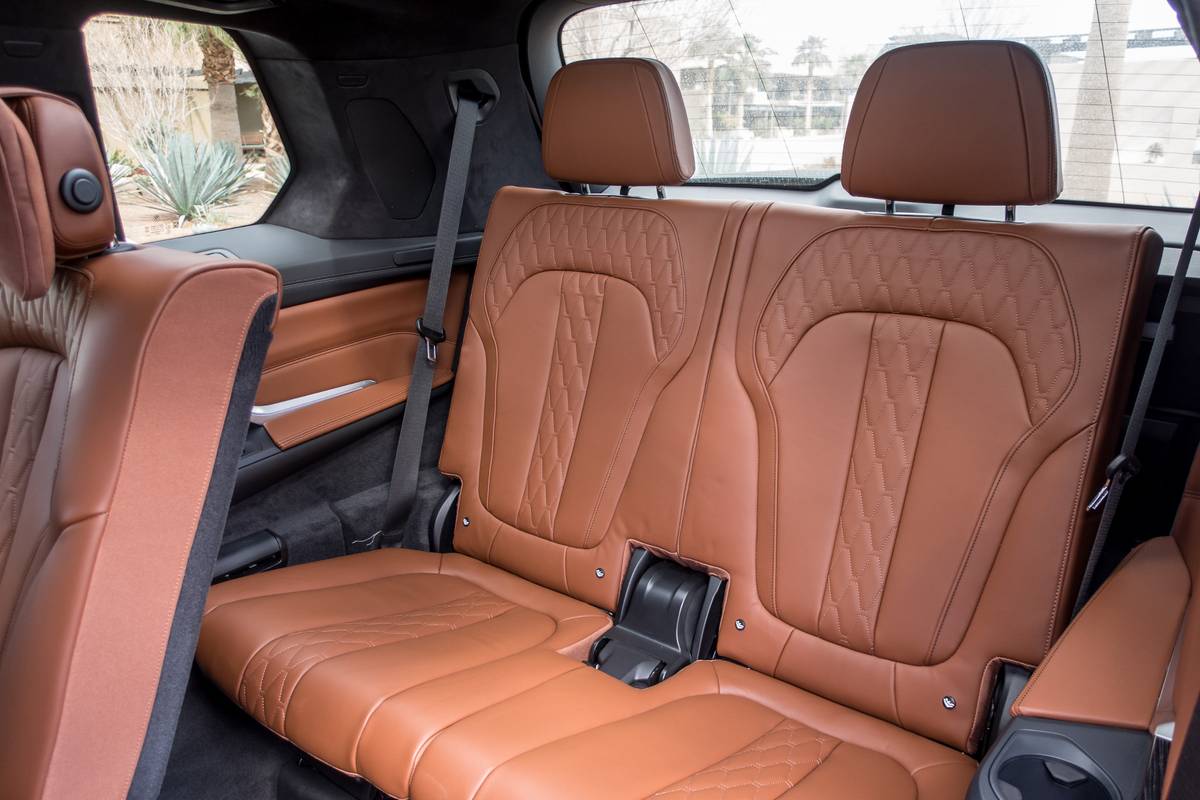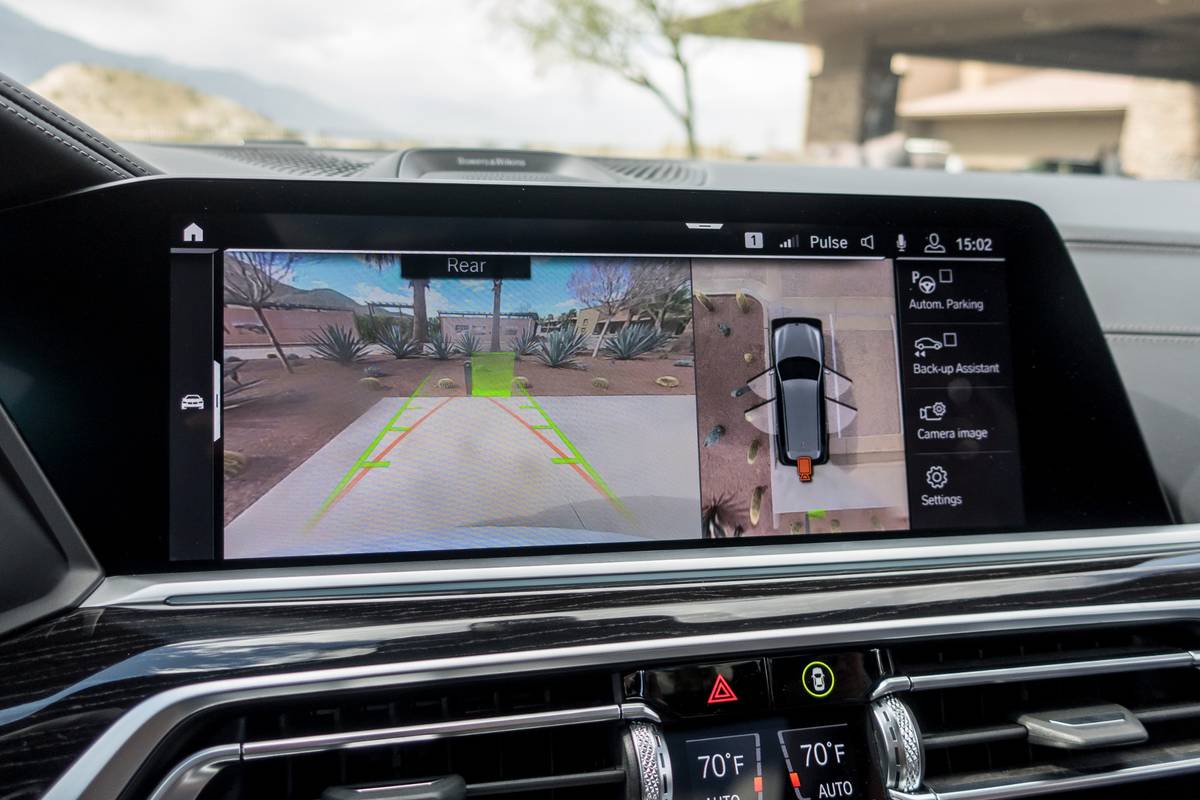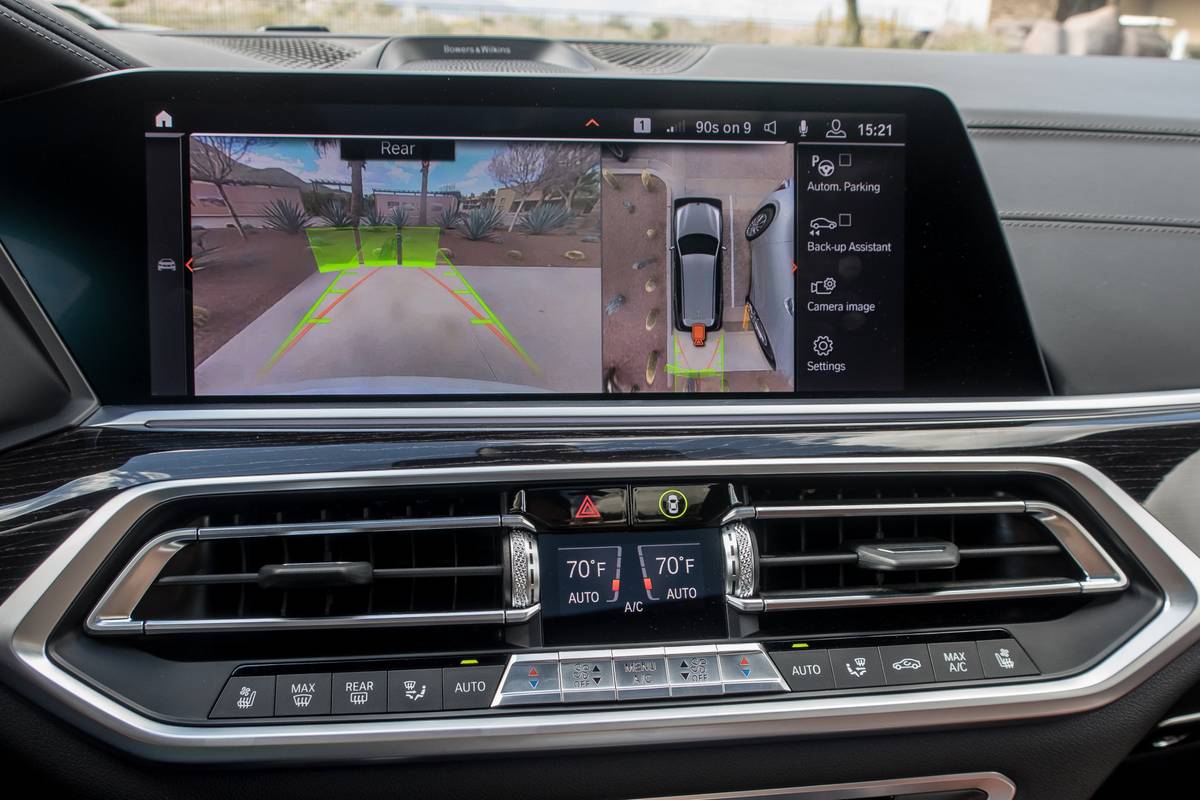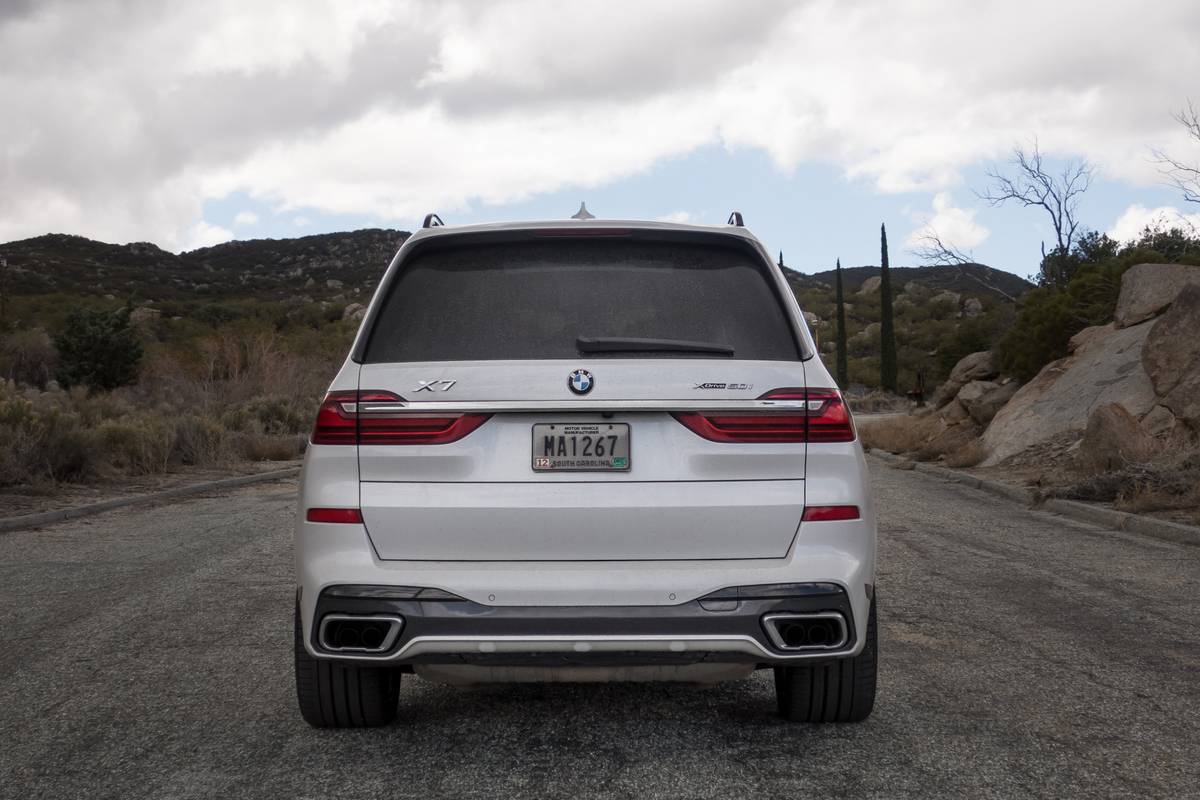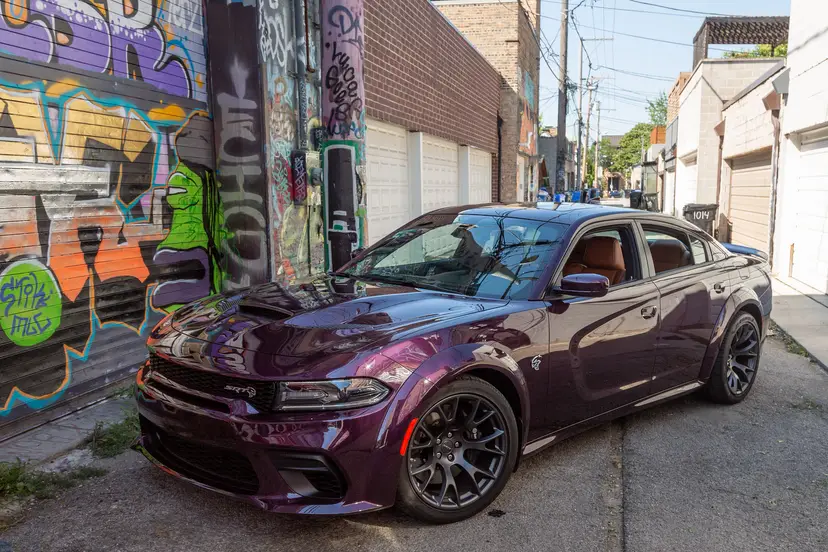
The verdict: The X7 is a true luxury vehicle that ticks all the boxes of what a big SUV should be, with plenty of space, technology and style.
Versus the competition: The only luxury SUVs that can match the X7’s roominess are much larger and more cumbersome to drive (and park).
It’s a case of “better late than never” for BMW, which arrives to the large three-row luxury SUV game later than its competitors but has done a great job focusing on the “better” part of that statement. It feels as though BMW took notes on what the rest of the three-row class did well — and not so well — then applied those observations directly to the X7.
The X7 is offered in two trim levels: xDrive40i and xDrive50i, representing different engines. There’s a big gulf between the starting prices: The xDrive40 starts at $74,895, while the xDrive50i costs nearly $20,000 more, starting at $93,595 (prices include destination charges). It competes against other three-row luxury SUVs, such as the Mercedes-Benz GLS-Class, Lincoln Navigator and Cadillac Escalade.
I tested both varieties of the X7 over the course of a week and found plenty to like. It was as if I’d made a wish list for the things a large, top-flight luxury SUV should be — and the X7 proceeded to check each item off that list, starting with …
A First-Class Interior
The number “7” in the X7’s name creates plenty of expectations, as it’s the number also used by BMW’s flagship luxury sedan. Thankfully, the X7’s fantastic cabin lives up to those expectations with very comfortable, highly adjustable seats and a light and airy feel thanks to some large side windows (which also help with outward visibility). Materials also impress, especially when you get the seats adorned in the optional Merino leather (which my test vehicles had). That leather will cost you, though: It was a $5,150 option for the very attractive two-tone Ivory and Night Blue full Merino setup on my xDrive40i. The xDrive50i came with a pricey leather option of its own, but instead of full Merino, it was only “extended” Merino and thus cost only an extra $1,000.
The X7 comes with a standard three-passenger bench in the second row; captain’s chairs are a $600 option. The captain’s chairs are the more comfortable choice, but in addition to losing seating capacity, bear in mind that those seats don’t fold down all the way. This prevents you from opening up the cargo area as fully as you can with the bench.
Most impressive, though, is how interior quality is maintained all the way back to the third row. Often in larger vehicles, the materials and presentation can drop off rapidly as you move backward. Not so in the X7, where the pillars were all nicely covered in Alcantara all the way to the back and the third-row bench had the same quality Merino leather found up front, though the seats had a little less padding. Speaking of the third row …
Three Usable Rows
Third rows are often neglected in SUVs, but not in the X7. Its third row has enough room to fit two adult passengers for long periods, in part due to the second row’s 5.7 inches of fore/aft adjustment, which allows you to find room for everyone. Besides being roomy and well-upholstered, the third row also has some striking amenities and options, including its own set of climate controls, a pair of USB-C charging ports and (my favorite feature) its own moonroof, set behind the large panoramic moonroof that covers the first two rows. This is a rare feature, and it really helps stave off claustrophobia for passengers back there. The third-row vents are also properly placed up in the ceiling, where they actually help with airflow.
Additionally, third-row adjustments are powered, just like the first two rows. BMW has handily included controls in three places: the cargo area, on the openings to the rear side doors and through the touchscreen up front. Press one button in the cargo area to open up maximum cargo space, then another to bring all the seats back up. One caveat: The seats move pretty slowly, taking them about 15 seconds to move up and down. Still, it beats crawling around the interior or walking around the X7 from door to door, moving each seat individually.
A Powerful Engine and a Plush Ride
The xDrive40i has a 335-horsepower, turbocharged 3.0-liter inline-six-cylinder that makes 330 pounds-feet of torque. The xDrive50i boosts those figures with its larger engine: a 456-hp, twin-turbocharged 4.4-liter V-8 that makes 479 pounds-feet of torque. Both come with an eight-speed automatic transmission and standard all-wheel drive.
With that big a difference in power, there’s a clear difference in driving between the two trims. The xDrive50i’s engine feels a lot more substantial — noticeably faster both off the line and in passing, along with much easier power delivery. The xDrive40i’s engine is up to the task of moving the X7 around competently, but it doesn’t hide the amount of work it’s doing, making it feel less luxurious.
The two vehicles I tested also came with different suspension setups, though both had giant 22-inch alloy wheels and run-flat tires. The xDrive40i had the X7’s standard self-leveling air suspension with adaptive shock absorbers. It rode a bit like a traditional SUV, with some noticeable body roll, but felt compliant and comfortable. I was a bit afraid the large wheels would make things choppy, but at both high and low speeds, the xDrive40i felt stable, with no weird vibrations or noises from the wheels.
Driving the xDrive50i, though, was a different experience. It came outfitted with a Dynamic Handling Package ($4,750), which included Active Comfort Drive with Road Preview, M Sport brakes, an M Sport differential and integral active steering (four-wheel steering). The end result is a vehicle that feels at once tighter and more comfortable. Much of this can be attributed to the Active Comfort Drive system, which uses forward-facing cameras to detect oncoming turns and road imperfections, then prepares the suspension accordingly. It feels like the X7 glides down the road when it’s going straight, and the system even helps mitigate body roll in turns, making it feel more athletic.
The xDrive40i strikes back with much better fuel economy, checking in at an EPA-estimated 20/25/22 mpg city/highway/combined versus 15/21/17 mpg for the xDrive50i and its larger engine.
Technological Superiority
I was also impressed by the X7’s technological acumen, from both a multimedia standpoint and a safety one. The multimedia system is powered by the latest version of BMW’s iDrive, which has come a long way. Early versions weren’t good, but it’s gotten more powerful, easier to use and more intuitive since. It is most easily operated via the touchscreen itself, but the placement of the screen — up high on the dash for better visibility — makes it a bit of a reach while driving. I ended up using the dial controller between the seats most of the time, unless I was at a stoplight and could safely lean forward.
A small point of caution: Just because the system is easier to use doesn’t mean it’s easy. There’s a lot of content and settings for the X7’s various features built into the system, and it can be overwhelming. My recent experience driving the new BMW 3 Series, as well as the Z4, gave me a head start on knowing how to navigate the different menus and submenus. The good news is that I believe the system can be mastered within a few weeks. But it can be a bit frustrating at first.
The 12.3-inch touchscreen is joined by another 12.3-inch display in the gauge cluster. This screen isn’t quite as customizable as Audi’s Virtual Cockpit system, but it does its job of relaying both the standard speed and tachometer info, as well as map information and the state of the X7’s various safety systems (more on this later). The X7 also offers a really big head-up display (standard on the 50i, part of a Premium Package on the 40i), which can show much of the same information, so you look down even less. But the display disappears if you wear polarized sunglasses even if its brightness is turned all the way up.
Perhaps more impressive than the X7’s multimedia setup is the amount of safety technology it can have. Pretty much every safety feature you can think of is available on the X7, including blind spot warning, forward automatic emergency braking with pedestrian and cyclist detection, lane departure warning, speed limit information, and front and rear parking sensors — all standard. On top of that, the xDrive50i adds a 360-degree camera system, head-up display, lane keep assist, adaptive cruise control, automatic parallel parking and BMW’s Extended Traffic Jam Assistant. Each of these safety features made their way onto the xDrive40i I tested, so it’s possible to outfit the lower model generously, as well.
As someone who deals with traffic on a regular basis living in Los Angeles, Extended Traffic Jam Assistant piqued my interest. The system works in traffic on the highway at speeds under 37 mph, using a camera in the instrument panel to make sure the driver is watching the road. As long as you don’t look away, the X7 will basically pilot itself; there’s no need to put your hands on the steering wheel. Beyond that speed, the X7 reverts to standard lane keeping and adaptive cruise control functionality, which does require you to put a hand on the wheel. The system works pretty much as advertised, crawling along and stopping smoothly. At speed, the lane-centering system is a bit busy; you can see the steering wheel making micro-adjustments constantly — which can make the nose wiggle a little, but only the driver will really notice. My passengers were none the wiser.
What’s the Catch?
This last item isn’t a wish, but rather a reality check. All the things I’ve mentioned sound pretty great, right? Bad news is, they’ll cost you: Both the vehicles I tested stickered at over $100,000, which is quite a stretch for the xDrive40i and its $74,895 starting price. My test vehicle added about $25,000 worth of options, bumping its price up to $100,995. The xDrive50i I drove cost a cool $117,645.
Does the amount of car you get match the price tag? I’d argue yes given the incredible interior quality, technology and comfortable performance you get out of the vehicle. The xDrive50i does feel like the more substantial of the two thanks to that crazy-good powertrain, but the base model is no slouch.
BMW might have shown up rather late to the large SUV party, but it brought caviar.
Cars.com’s Editorial department is your source for automotive news and reviews. In line with Cars.com’s long-standing ethics policy, editors and reviewers don’t accept gifts or free trips from automakers. The Editorial department is independent of Cars.com’s advertising, sales and sponsored content departments.
































